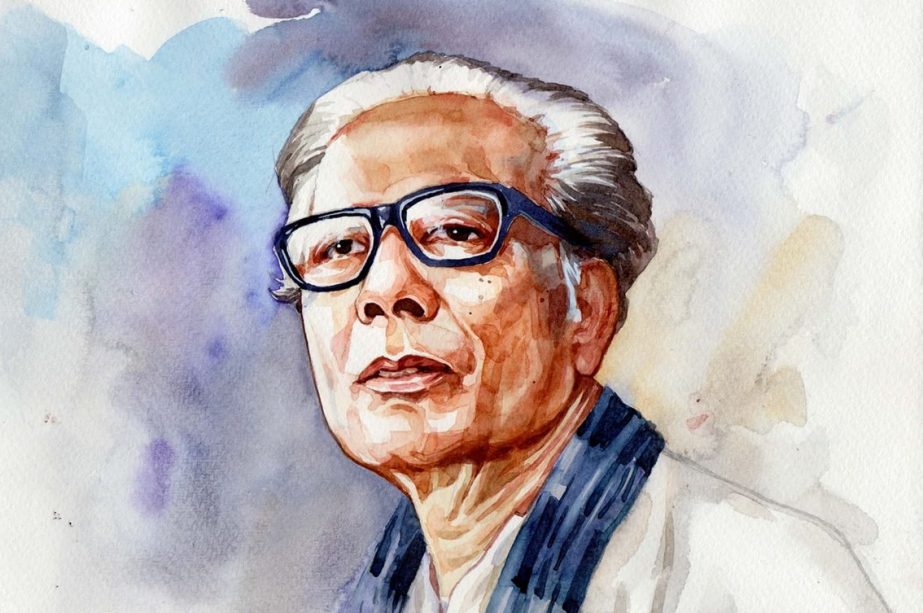
UNB, Dhaka :
Wednesday marks the 107th birth anniversary of legendary artist-art educator Zainul Abedin, widely revered as the ‘Shilpacharya’ (maestro of art).
Born on December 29, 1914, in Kishoreganj at the then British India, Shilpacharya Zainul Abedin played the fundamental role behind the establishment of the Faculty of Fine Arts of Dhaka University and the Folk Art Museum in Sonargaon, Narayanganj.
The 107th birth anniversary of the legendary artist is being celebrated with the annual ‘Zainul Utsab’ organised by Dhaka University’s Faculty of Fine Arts. The offline edition of the festival returned today after being virtually held last year, due to the Covid-19 pandemic.
DU Vice-Chancellor Prof Md Akhtaruzzaman inaugurated the festival at 11 am. Md Abul Monsur, Secretary at the Ministry of Cultural Affairs, joined the inaugural festival as the guest of honour.
The Faculty of Fine Arts also placed a floral wreath on the grave of the Shilpacharya and held a discussion followed by the ‘Zainul Award’ presentation at the inaugural ceremony of this 3-day festival.
Historically known for his sketches of the Bengal famine in 1943, Zainul developed his passion for art in his childhood at the banks of Brahmaputra river. He completed his graduation from the Government Art School, Kolkata in 1932, however, left Kolkata and permanently returned to Bangladesh (then East Pakistan), his motherland, just after the partition of the Indian subcontinent in 1947.
Zainul then actively worked behind the establishment of the Dhaka Art Institute and became its principal in 1949. The institute later became today’s Faculty of Fine Arts of Dhaka University.
The institute became the hub of fine arts practices in then East Pakistan and actively participated in historical foundation events of independent Bangladesh such as the 1952 Language Movement and the 1971 Liberation War under the artistic leadership of Zainul.

He willingly went on retirement from the Dhaka Art Institute in 1967 and was conferred the honorary title of Shilpacharya (great master of fine arts) by the institute.
Zainul received two years of training from Slade School of Fine Art in London and began a new style of art called the ‘Bengali style’ featuring folk art forms with their geometric shapes including the usage of semi-abstract representation and primary colours.
However, he lacked the sense of perspective, realising the limitations of folk art, and went back to nature, rural life and the daily struggles of people to make art that would be realistic but modern in appearance, thus being the pioneer of modern artistic style in the subcontinent.
He visited Palestinian camps in Syria and Jordan in 1970 and made 60–70 paintings of the refugees there, adding just another example of his calibre as a modern, international artist.
Known for the simple yet majestic projection of natural and social hazards, Zainul painted the 1970 Bhola cyclone that devastated then East Pakistan, portraying the effect of the cyclone through his painting ‘Monpura’.
As a fond lover of folk arts, Zainul formed Charu O Karu Shilpi Sangram Parishad and also collected a large number of traditional crafts, ceramic works, nakshi kanthas in his lifetime which he preserved through founding the Folk Art Museum at Sonargaon, Narayanganj in 1975. He also founded the Zainul Abedin Sangrahashala, a gallery of his own works at the Shaheeb Quarter Park on the bank of his nostalgia-infused Brahmaputra River in Mymensingh in the same year.
In 1973, Zainul received an honorary D.Litt from Delhi University. He was declared National Professor of Bangladesh in 1975. NASA honoured the iconic artist by naming a crater on the planet Mercury after the painter, called the ‘Abedin Crater’ in 2009.
Shilpacharya Zainul Abedin passed away on May 28, 1976 after suffering from lung cancer.

